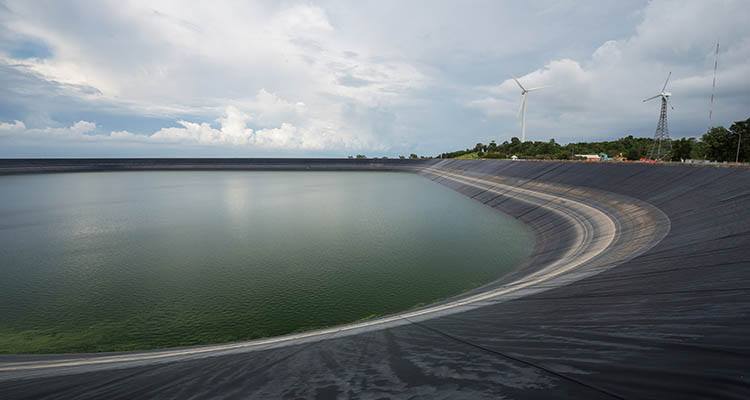Whether you’re constructing a commercial, residential decorative pond or agricultural retention pond, you’re going to need a liner. It’s important to do your research and choose the best pond liners material for the job at hand. We’ve been digging up information on the three popular types of materials for pond liners and have formed a deep retention pond of knowledge on the subject. Take a look at our side-by-side comparison to get a better idea of which pond liners material will work best for your next project.
RPE - Reinforced Polyethylene Pond Liners
RPE pond liners are by far the most durable of all of the materials available. Because these liners are reinforced, they are stronger and more puncture resistant than the two other major types of pond liners. Here are a few facts to consider about RPE liners:- RPE liners are half the thickness of EPDM and PVC liners
- RPE liners are one third the weight of other liners, making it easy to produce larger sheets and liners
- RPE packs smaller than other liners and is easier to install
- Because RPE liners are reinforced and stronger they don’t stretch as much as EDPM liners, but can still fold around corners and pond shelves and look good
- RPE pond liners don’t require underlayment because of their strength and puncture resistance
- RPE pond liners are considered to be the most durable liners available and last upwards of 40 years
- Can be welded together with heat
- RPE liners are fish and plant safe
EPDM - Ethylene Propylene Diene Monomer Pond Liners
For many years, EPDM pond liners have been the go-to material in the construction of ponds of varying kinds. With the rise of RPE liners, EPDM has gotten a run for its money. Consider these facts about EPDM pond liners:- Made from rubber, EPDM liners are very flexible and fold around corners easily
- Ponds lined with EPDM require an underlayment due to how soft and flexible the material is
- Sheets of EPDM liner can’t be welded together with heat, but can be adhered with liner tape
- EPDM liners can be difficult to ship due to heavy weight concerns
- EPDM liners are the heaviest of the three liner materials
- EPDM liners are the least puncture resistant of the three materials
- EPDM liners are fish and plant safe
PVC - Polyvinyl Chloride Pond Liners
The third popular type of material for pond liners is PVC. PVC liners are generally the least expensive option, but their downsides far outweigh their low cost.- PVC liners are heavier than RPE liners, but not quite as heavy as EPDM
- PVC liners are more puncture resistant than EPDM liners, but not as much as RPE
- Plasticizers are added to PVC to make the liners more flexible
- These liners can contain trace amounts of arsenic and other toxins that are lethal to pond fish
- Plasticizers also can cause cracks or splits in the liners, which threaten wildlife
- PVC liners are inexpensive and easy to use, but not desirable for cold climates
- PVC pond liners have a lack of UV stability meaning direct sunlight can have negative effects
- PVC liners can be seamed together using liner tapes or heat for larger areas




